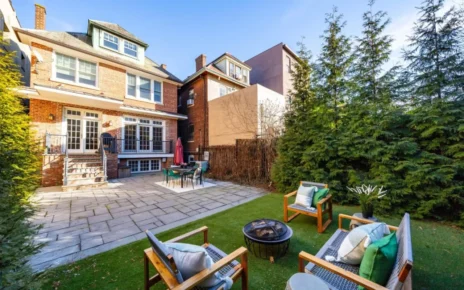When it comes to choosing a new front or back door, homeowners in the UK are often faced with one key decision — composite or uPVC. Both options have grown in popularity for their durability, security, and energy efficiency, yet they cater to slightly different needs and budgets. Understanding the differences between the two can help ensure you choose a door that complements your home’s style, improves its performance, and offers long-term value.
While they may look similar at first glance, the materials, structure, and lifespan of composite and uPVC doors vary considerably. To make an informed choice, it’s worth exploring what sets them apart and how those distinctions impact everything from appearance to insulation.
Understanding the Basics of Each Door Type
A uPVC door — short for unplasticised polyvinyl chloride — is made from a single type of plastic material. It’s known for being lightweight, affordable, and low maintenance. The door’s frame and panel are typically reinforced with a steel or aluminium core to improve stability and strength, while the hollow design helps with insulation.
Composite doors, on the other hand, are made from a combination of materials. This layered construction usually includes a solid timber or high-density foam core, a reinforced frame, and a durable outer skin made from glass-reinforced plastic (GRP). The idea behind composite design is to combine the best properties of each material — strength, weather resistance, and insulation — into a single, high-performing product.
Both door types are designed to offer security, energy efficiency, and style, but their structure and quality of construction lead to very different results.
The Importance of Appearance and Style
The front door is the first thing visitors notice about a home, and its style can set the tone for the property’s entire character. uPVC doors are available in a range of colours and designs, though their finishes are typically smooth and uniform. They can look clean and modern, but they don’t replicate the depth or texture of real wood. For homeowners seeking a simple, contemporary look that’s easy to maintain, uPVC remains an attractive and budget-friendly choice.
Composite doors, however, take aesthetics to another level. Their GRP outer layer can be moulded and textured to mimic the natural grain of timber, giving them a more authentic and high-end appearance. They are available in a wider variety of colours, finishes, and styles — from traditional cottage designs to sleek, minimalist options — allowing them to complement virtually any type of property.
Because the colour on a composite door is integrated into the outer skin, it’s also far more resistant to fading. Even after years of exposure to the elements, it will maintain its vibrancy and texture without the need for repainting. For homeowners who value curb appeal and longevity in design, the composite option often comes out ahead.
Strength and Security Considerations
Home security is one of the most important factors when choosing a new door. Both uPVC and composite doors offer solid protection, but they achieve it in different ways.
A standard uPVC door includes a multi-point locking system and reinforced steel core, providing a strong barrier against forced entry. For most homes, this level of security is more than adequate, especially when paired with a quality lock and professional installation. However, because the door panel itself is lighter and more flexible, it may not feel as solid as a composite door when closed.
Composite doors are built with a denser structure, often featuring a solid timber or foam core combined with reinforced steel or aluminium elements. This layered construction makes them incredibly strong and impact-resistant. Many homeowners notice the difference immediately when closing a composite door — it feels heavier, sturdier, and more reassuring.
The advanced engineering behind composite doors also makes them more resistant to warping and flexing, meaning they retain their shape even after years of use. Their robust design, combined with premium locking mechanisms, gives them the edge for security-conscious homeowners.
Thermal Efficiency and Insulation
With rising energy costs, insulation has become a key consideration for any home improvement project. The quality of a door can have a noticeable effect on how well a home retains heat.
uPVC doors are naturally good insulators thanks to their multi-chambered design. The internal air pockets within the frame and door panel act as barriers that slow down heat transfer. When paired with modern weather seals, uPVC doors can deliver reliable energy performance, helping to reduce draughts and lower heating bills.
Composite doors, however, take thermal efficiency a step further. The dense core — whether made from engineered timber or high-density foam — provides superior insulation. Combined with precision manufacturing and tight weather seals, composite doors minimise heat loss and keep cold air out more effectively than standard uPVC.
In practice, this means a composite door can help maintain a more stable indoor temperature throughout the year, improving comfort and energy efficiency. For homeowners who want maximum insulation and reduced carbon emissions, composite doors are generally the better choice.
Durability and Weather Resistance
The unpredictable British weather is a true test for any exterior door. Over time, exposure to rain, wind, and sunlight can take its toll on materials, leading to discolouration, warping, or swelling.
uPVC doors are designed to be weather-resistant, but because they are made from a single type of plastic, they can expand and contract slightly with temperature changes. In most cases, this is minor and doesn’t affect performance, but in extreme conditions, it can lead to a looser fit or slight misalignment.
Composite doors are far more stable. The combination of materials ensures that expansion and contraction are minimal, even during temperature extremes. The GRP skin is particularly resistant to fading, cracking, and peeling, maintaining its finish year after year without the need for maintenance beyond the occasional clean.
This superior durability also means composite doors have a longer lifespan. While a good uPVC door might last 20 years with proper care, a high-quality composite door can easily exceed 30 years while maintaining its original appearance and performance.
Maintenance and Upkeep
One of the biggest attractions of both uPVC and composite doors is that they require far less maintenance than traditional timber. There’s no need for sanding, painting, or varnishing — just a quick wipe with a damp cloth to keep them looking fresh.
However, there are still small differences between the two. uPVC doors are low-maintenance but can be more prone to surface scratching and discolouration over time, especially if exposed to direct sunlight. Composite doors, by comparison, retain their colour and finish with minimal effort. Their GRP surface resists marks and weathering, making them the ideal choice for homeowners who want a door that will look as good in 15 years as it did on the day it was installed.
Hardware maintenance is another consideration. Handles, hinges, and locks should be lubricated annually on both types to ensure smooth operation and longevity. Regular cleaning of the weather seals also helps maintain airtight performance.
Cost and Long-Term Value
Price is often the deciding factor for many homeowners, and it’s true that uPVC doors tend to be more affordable upfront. They provide excellent value for those working within a tighter budget or for properties such as rental homes where simplicity and reliability are the main priorities.
Composite doors, however, represent a long-term investment. While their initial cost is higher, the enhanced durability, insulation, and security can offer better value over time. Lower energy bills, reduced maintenance, and a longer lifespan contribute to a smaller overall cost of ownership.
From an aesthetic and financial standpoint, a composite door can also add more value to a property. Homebuyers often recognise the quality difference immediately, making it a subtle yet appealing feature when selling a home.
Ultimately, it’s a question of whether you prefer to save money in the short term or invest in performance that lasts for decades.
Environmental Impact
Sustainability is becoming an increasingly important factor in home improvement decisions. Both uPVC and composite doors have made progress in becoming more environmentally friendly.
Modern uPVC doors are often manufactured using recycled materials, and they can be fully recycled at the end of their life. Advances in production have also reduced the environmental impact of the manufacturing process. Composite doors, particularly those with timber cores sourced from sustainable forests, can also be eco-friendly options. However, because they are made from a combination of materials, recycling them at the end of their lifespan can be more complex.
That said, the longevity of composite doors means they need replacing far less frequently, which helps offset their initial environmental footprint. Both types contribute to improved home energy efficiency, which in turn helps reduce carbon emissions. Choosing a supplier that prioritises sustainability is the best way to ensure either option aligns with eco-conscious values.
Making the Right Choice for Your Home
The decision between composite and uPVC doors ultimately depends on your priorities. For homeowners seeking an affordable, low-maintenance, and practical solution, a well-made uPVC door remains a strong choice. It offers good energy efficiency, modern security, and reliable weather protection at a reasonable price.
For those who value a premium finish, greater durability, and superior insulation, a composite door is hard to beat. It combines style and substance, offering the appearance of timber without the maintenance and a level of performance that will serve your home for decades.
Both options have their place in modern home design, and both can be tailored to match your property’s architecture and your personal preferences.
The Final Word on Composite vs uPVC
While uPVC doors remain popular for their affordability and practicality, composite doors have become the benchmark for performance, security, and design versatility. The layered construction of a composite door delivers strength, insulation, and style in one package, making it a worthwhile investment for homeowners looking to enhance both comfort and kerb appeal.
Choosing between the two isn’t just about the door itself — it’s about the priorities of the homeowner. If budget and simplicity are key, uPVC offers a dependable and cost-effective solution. If long-term value, design sophistication, and premium quality are your goals, a composite door stands as the clear winner.
Whichever route you choose, the most important factor is quality installation. A door is only as good as the company that fits it, so working with an experienced, trusted installer ensures that your investment performs as beautifully as it looks for years to come.




